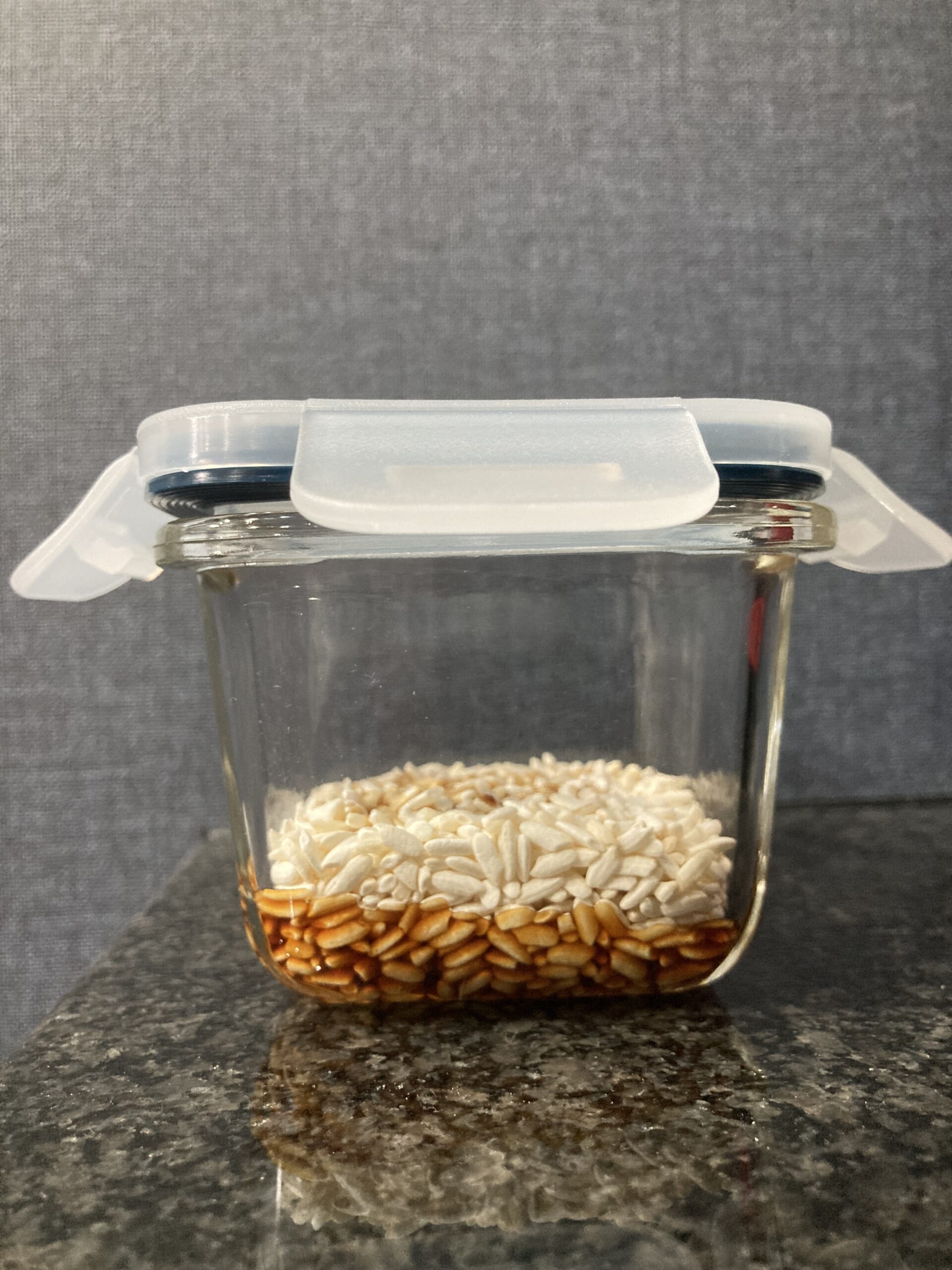Shoyu koji (醤油麹) is a magical Japanese seasoning made by combining soy sauce with rice koji. It’s packed with savory umami, slightly sweet, and wonderfully aromatic. But did you know—technically, it’s not fermented in the traditional sense?
Let’s clear that up and learn how you can easily make your own batch at home.
So, Is Shoyu Koji Fermented?
Not exactly! While many people think of shoyu koji as a fermented product, what’s really happening is enzymatic breakdown.
Koji (rice inoculated with Aspergillus oryzae) is rich in natural enzymes—especially proteases and amylases. When mixed with soy sauce, these enzymes break down the proteins and starches in the soy sauce and the koji rice, releasing glutamates and sugars. These are what give shoyu koji its deep, complex, and slightly sweet flavor.
There are no living microorganisms actively fermenting in this process (like you’d find in yogurt or kimchi), but it’s still a traditional biochemical transformation that belongs in any ferment-lover’s kitchen.
How Is It Different from Shio Koji?
Shio koji (salt + koji + water) is another traditional Japanese seasoning made with koji. It’s wonderful for marinating, tenderizing, and enhancing flavors. However, shoyu koji is even more concentrated in umami.
Why?
Because soy sauce already contains amino acids from its own fermentation, and when you add koji enzymes into the mix, you essentially amplify the umami effect.
Think of it as supercharged shio koji.
Why You’ll Love Making Shoyu Koji
- Super simple: Only two ingredients.
- No measuring salt: Soy sauce already contains salt, so you don’t need to calculate salinity like in other koji condiments.
- Perfect for small batches: You can make just a few spoonfuls to try it out.
- Deep flavor: A little goes a long way—great for boosting flavor in even the simplest dishes.
⚠️ Note: Don’t use reduced-sodium soy sauce (減塩醤油 gen-en-shoyu). The proper salt level helps keep the mixture stable and safe.
Ingredients
- Rice koji (dried is easiest to find; fresh also works)
- Regular soy sauce (full-salt, naturally brewed)
How to Make It (Small Batch Friendly)
- Put rice koji in your clean jar.
- Pour soy sauce into your jar.
- Stir until the koji is well-coated. If it looks too dry, add a bit more soy sauce to cover.
- Cover the jar loosely with a lid or cloth.
- Leave it at room temperature for about 3–7 days, stirring once daily.
- When the grains soften and the smell becomes sweet and savory, it’s ready!
Once ready, refrigerate your shoyu koji. It keeps for several months and continues to develop flavor over time.
My small-batch Shoyu koji
Day1
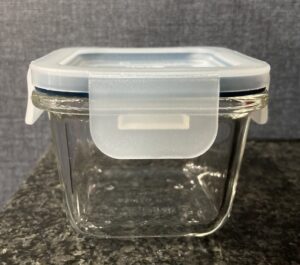
I found this small glass container with lid at IKEA. The capacity is 180ml, which is perfect for starting small.
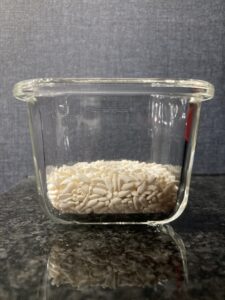
Let’s put some rice koji. I didn’t measure how much, but this bit came out great. Make sure you leave some space for stirring. Koji will absorb soy sauce and expand, too.
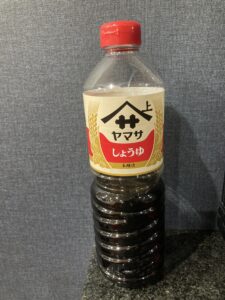
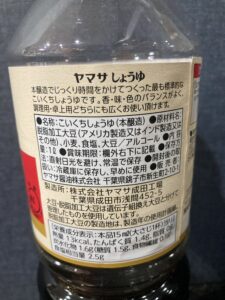
I used Yamasa Shoyu. This is full salt version. Green capped shoyu tend to be less-salt, I think, but check the label.

Pour soy sauce to cover the rice koji. In this picture, koji haven’t fully absorbed soy sauce, but it’s fine for now. You can always add soy sauce without worrying about salinity.
Day2

I woke up to see my batch this plumpy. Don’t worry if it looks too dry.
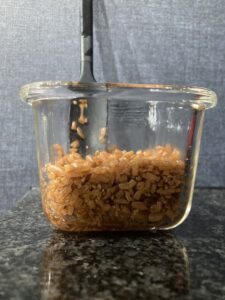
Let’s do today’s stirring. Rice begins to crumble and pieces become small. It looked still dry at this point, so I added just enough soy sauce to cover the koji up.
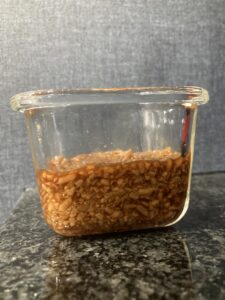
I only added soy sauce once, but it came out fine. Like I mentioned in my post of shio koji, moisture will come out eventually.
Day3
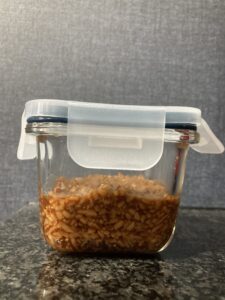
It looks like koji had some more space to take in liquid. Let’s give it a stir of the day.
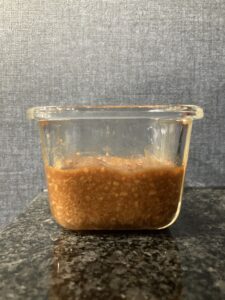
Rice koji is broken down to bits. I didn’t squash them with my spoon, it will break down naturally.
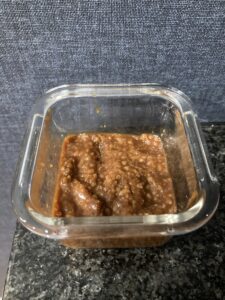
This is from another angle. Looking good, but I’d like to leave it for a few days longer and see how it goes.
Day4
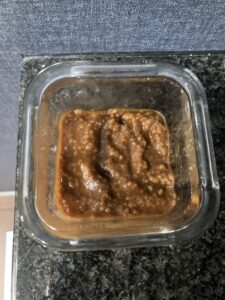
Do you notice darker parts compared to the day before? It’s liquid! Told you moisture will come eventually! Let’s give it a good stir.
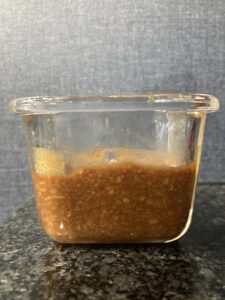
Rice crumbs are even smaller. I licked my spoon after stirring, and I called it done! Time to move it to my fridge.
How to Use Shoyu Koji
You can use it in place of soy sauce to add more depth—or as a new kind of seasoning altogether.
- Marinade for meat, fish, or tofu
- Mixed into salad dressings
- Stirred into soups and broths
- Added to rice or noodle dishes
- As a dipping sauce base (with citrus juice or sesame oil)
- Use shoyu koji instead of soy sauce on sushi. it’s mind-blowing!!
Just a spoonful transforms the dish!
Start Simple, Start Smart
When you’re getting into koji condiments, it’s easy to get overwhelmed. I’ve made my fair share of big batches only to realize I didn’t know how to use them all.
That’s why I now recommend starting small—and starting with shoyu koji. It’s stable, simple, and packed with flavor. Once you try it, you’ll find yourself reaching for it again and again.
